
Between 1984 and 1986 I took the last two years of Fine Arts, specializing in Image in Barcelona. During those years I luckily had Joan Fontcuberta and Manolo Laguillo(+) as teachers of photography. I can't remember which one commissioned this work I did during 1985.
I think my starting point was a photo found in the trash at a photobooth asking why that person broke his own image and threw it.
Sometimes there are answers as problems with exposure, lighting, cutting, but there are more incomprehensible cases.
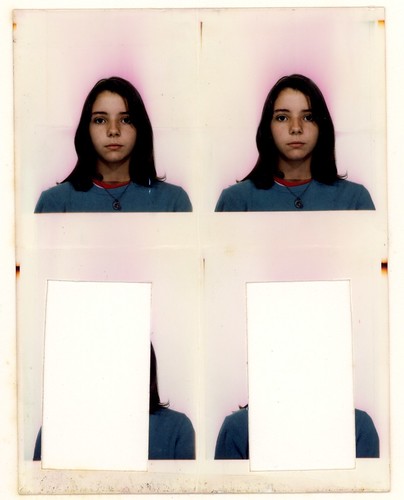
Detail of photo 31: Why have two shots and let the other two, identical, in the trash?
For months I visited all the photobooths I could, many of them in the metro network, within the network so at the price of a single trip I travelled all over town picking up trash. Instead of getting a dig in the bins next to all the machines I empty out it into a bag and took it home to look carefully into cigarette ends and all that we already know that ends in the trash, looking for every piece of broken photos.
Those years there were several models of photobooth machines that make a single-shot-4 identical pictures, a single-shot a large photo or the most common 4 shots in a strip in color or black and white. These ones caused more mistakes and amusing situations.
There are almost classical accidents: leave the cabin before they shoot the last shot, someone who enter his head inside the cabin, the flash freeze you blinking or looking anywhere. There are more rare ones like people trying to take pictures of two person for the same money coming and going, or you can have the lights melting and every shot the pictures are darker until total blackout. Some of the photobooths had a little accesory to cut the photos, causing many heads severed in half.

Photos 41 and 46: What about flashes? Was it really four photos?
I took some self-portraits, using a resource that I learned of the trash: folding the photo before it was dry face against face caused the chemicals to transfer part of the image from side to side and get overlay effects superfluous but graphically interesting.
Fortunately I assembled the pictures to a basic paper with a special photo heat-adhesive photo. Materials had to be good because for 24 years I've had the photos kept in a shoebox and the have almost no problems of yellowing, stains, photos peeled off.
In 2001 premiered the film Amélie(Le fabuleux destin d'Amélie Poulain (2001)). I will not tell here the plot in case anyone had not see it, but we need to know/remember that looking for photos in the trash of photobooths is one of the threads of argument, not the only one but very important though. I enjoyed a lot watching the coincidence with my work. Let's say that I enjoyed the movie a little more than most people.
Searching information for this post one of the first things I did was look for photos of Amélie's photobooth, and here it is, with the kind permission from its author (thank you!):
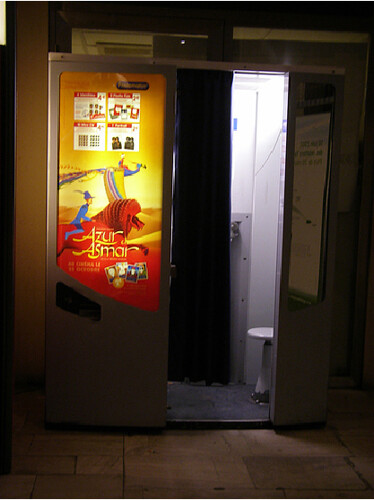
- amelie photobooth at Gare de L'Est, París, by screaming lulu (©)
There is an interesting photography cult around this film. Right now Flickr group Amelie Poulain has more than 1.000 photos to explore. Getting photos in the Cafe des Deux Moulins should be mandatory for any fan of the film visiting Montmartre, I even know in person a girl named Amelia who was there. Among hundreds of examples at Flickr I chose this Ming portrait. In the reflection you can see a framed oval poster of the movie hunging on the back wall:
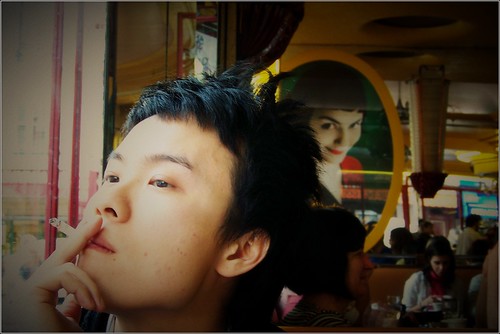
- Ming at deux moulins, by clairelu (CC license:by-nc-nd)
And not just the Café, they are also the steps of Montmartre, the carousel, the greengrocer, the streets of the neighborhood.
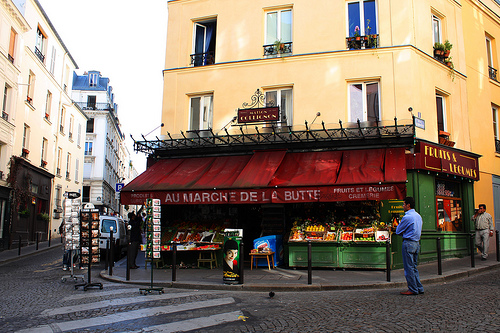
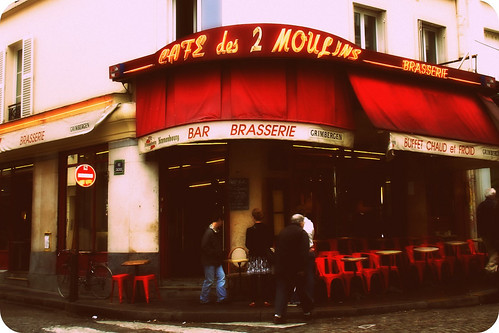
- Amélie Poulain, film greengrocer location by Gilbert Kallenborn (CC license:by-nc-nd)
- Cafe des 2 Moulins by Inti (CC license:by)
I almost forget this video gem: Amélie moments in Prelinger archives:
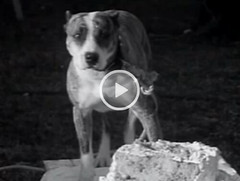
Sure that neither I nor the writers of Amélie be the only nor the first to have discovered the treasure hidden in the photobooths trash. With a simple search you find the work of mixup, totally focused on photobooths and of course including found photos. And you have surely thousands of people who have explored this.
The web photobooth.net reflects many aspects of the use of photobooth machines, cultural or artistic. They organize annual meetings, here you can see a photo album of the last meeting a couple of months ago.

And for found-photos you have works as interesting as Pablo Cruz Aguirre project: Wellcome to Fotos encontradas: Do you remember destroying, burning or throwing away photos? Sometimes, a graceless gesture, an old fashioned garment or the company of someone we'd like to forget, are reasons enough for deciding to get rid of some of our photos. The same happens when we find photos of relatives with whom we are no longer sentimentally linked or when time has erased all reference ... All of the photos and objects that are shown here have been found in the streets of Buenos Aires ... inside sunday's trashbags, many others thrown on the sidewalks or on the street. The rest may have been lost by their owners.
Or in general what can be found on sites like thefoundphoto.com, or the Flickr groups Found Photographs or The Museum of Found Photographs.
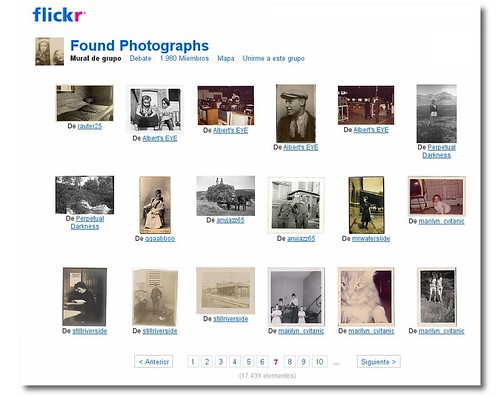
> Here you can see the photo album with my work, which has 93 images (2 of them self portraits).

. (Thanks to all authors who gave the pictures to this post, on request or by using Creative Commons licenses)
- This post in original spanish version





Hi, did you know that the character obsessed with photobooths/laughs/etc is actually based on foucault, who actually had all of the collections of that character? When he passed away, he willed those collections to his good friend, the director of the film :}
ResponderEliminarYour place is valuable for me.Thanks!
ResponderEliminarpurchase a photo booth
purchase photo booth
portable photo booths for sale